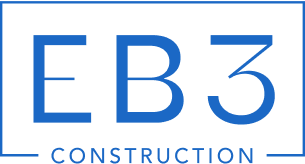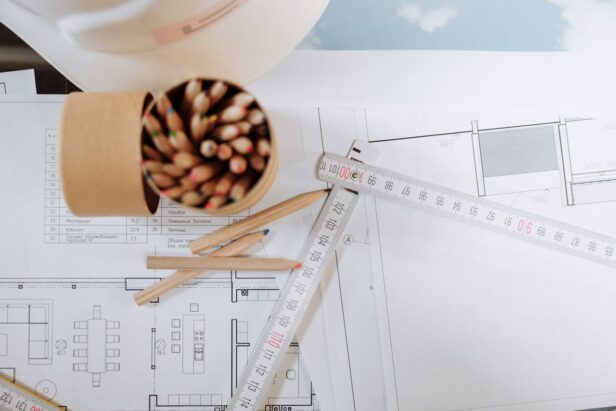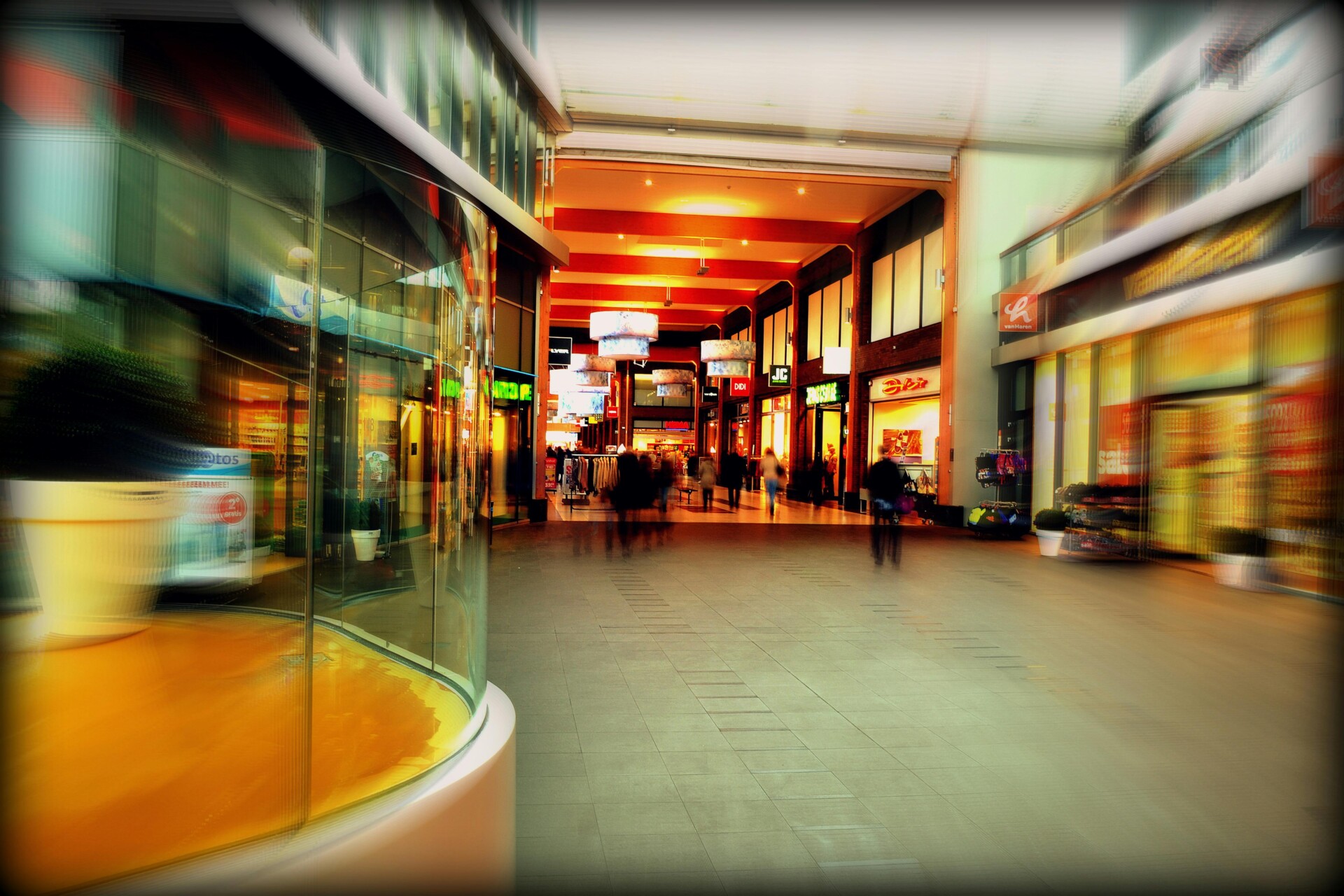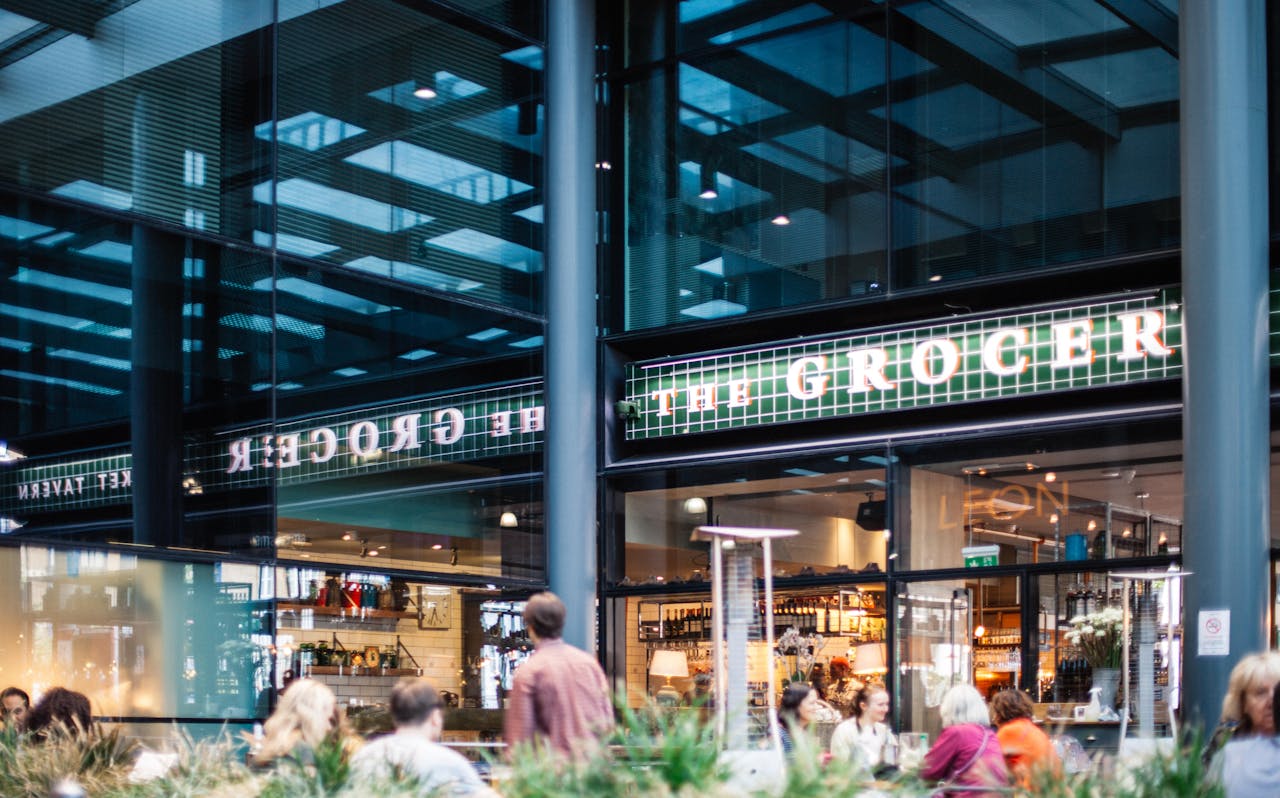Retail construction cost per square foot ranges from roughly $117 in the Southeast to $211 in Northern California, with national averages hitting $155 for tenant fit-outs. These figures reflect tenant improvement work only, which landlords and tenants need to track separately from core-and-shell construction costs.
Restaurant spaces within retail centers typically require 20% to 30% more investment than standard retail due to specialized MEP systems, commercial kitchen equipment, and ventilation requirements. The wide regional variation stems from local labor rates, permitting processes, and market conditions that we navigate daily in commercial construction planning.
How Much Do Retail Stores, Strip Centers, And Malls Cost Per Square Foot?

Retail construction pricing varies dramatically by project type and market conditions. We consistently find that neighborhood strip centers command different investment levels than regional malls, and tenant fit-out requirements create additional budget layers that developers and property owners must factor into their planning from the earliest stages.
Neighborhood Strip Center Construction Costs
Neighborhood strip centers cluster around $371 per square foot nationally, though regional variations create substantial budget differences. Eastern U.S. markets typically range from $309 to $371 per square foot, while Western U.S. projects span $261 to $413 per square foot.
Premium markets push these costs higher, with some neighborhood strip centers reaching $370 to $580 per square foot depending on location specifics and construction scope. We see these elevated costs in markets with challenging site conditions, premium finish requirements, or complex regulatory environments that demand additional coordination and specialized systems.
Regional Mall Development Pricing
Regional malls represent a higher investment tier, averaging around $537 per square foot nationally. Eastern U.S. regional malls typically cost between $461 and $554 per square foot, while Western U.S. projects range from $442 to $575 per square foot.
The increased complexity of regional mall construction drives these higher costs through multiple factors. Common areas require enhanced HVAC systems for larger volumes, sophisticated fire suppression systems span greater areas, and structural requirements accommodate heavier live loads from diverse retail operations and high foot traffic.
Retail Tenant Improvement Considerations
Tenant fit-out costs average approximately $155 per square foot across the United States, though regional cost differences create significant planning implications. Southeast markets often see tenant improvements around $117 per square foot, while Northern California projects typically reach $211 per square foot.
These tenant fit-out figures represent the interior buildout work that transforms core-and-shell spaces into functional retail environments. We coordinate with tenant teams to ensure MEP rough-in adequately supports their planned electrical loads, HVAC requirements, and specialized systems like point-of-sale infrastructure and security systems.
Restaurant Construction Premiums
Restaurants within retail developments typically add 20 to 30 percent to base retail construction costs. Kitchen equipment installation, grease management systems, specialized ventilation requirements, and higher electrical and HVAC loads create these cost premiums.
We plan for restaurant tenants to require enhanced structural support for commercial kitchen equipment, upgraded electrical service for cooking equipment and refrigeration systems, and sophisticated ventilation systems that meet health department requirements. Fire suppression systems in restaurant spaces also demand specialized design and installation expertise that increases both material and labor costs.
Core-And-Shell Versus Tenant Improvement Scope Separation
Understanding the distinction between core-and-shell construction and tenant improvements remains critical for accurate budget planning. Landlords typically deliver core-and-shell construction that includes the building structure, envelope, basic MEP systems, and common areas.
Tenants fund interior tenant improvement work that transforms raw space into their operational environment. We always separate these scopes when providing pricing to ensure property owners and developers understand their direct construction responsibilities versus tenant-funded improvements that will occur after building delivery.
Which Cost Components And Project Choices Drive Retail Cost Per Square Foot?
Hard costs dominate retail construction budgets through materials and labor expenses. Materials typically represent 45% to 50% of total project costs, covering structural elements, finishes, fixtures, and specialized retail components. Labor expenses account for another 20% to 40%, encompassing skilled trades, installation work, and project coordination across multiple specialties.
Major building systems consume roughly 12.9% of total construction costs through HVAC installation, electrical infrastructure, and plumbing systems. We coordinate these mechanical, electrical, and plumbing (MEP) systems as integrated components that directly impact both construction costs and long-term operational efficiency.
Soft Costs Shape Project Economics
Design and engineering fees typically range from 8% to 15% of total project costs, covering architectural services, structural engineering, and MEP system design. These professional services establish the foundation for cost-effective construction through early coordination and proper system sizing.
Permitting and legal expenses add 3% to 5% to project budgets through plan review fees, inspection costs, and regulatory compliance requirements. We navigate local building codes, accessibility standards, and safety regulations that vary significantly between jurisdictions and directly impact both timeline and costs.
Financing costs and project management complete the soft cost structure through construction loan interest, insurance premiums, and oversight expenses. These elements add measurable costs while ensuring proper project execution and risk management throughout construction.
Retail-Specific Drivers Increase Complexity
Retail spaces require high lighting density for merchandise display and customer comfort, driving electrical loads well above standard commercial construction. We design electrical systems to handle intensive lighting requirements, digital displays, and point-of-sale equipment that create unique power distribution challenges.
HVAC systems face demanding performance requirements to maintain customer comfort across varying occupancy levels and seasonal conditions. Retail spaces need consistent temperature control, adequate ventilation, and noise management that requires sophisticated system design and installation.
Food service operations within retail centers add substantial complexity through kitchen ventilation, grease management systems, and fire suppression requirements. These specialized systems typically increase base retail costs by 20% to 30% due to enhanced MEP requirements and safety equipment.
Brand standards and finish quality create significant cost variability across retail projects. Premium retailers demand high-end materials, custom millwork, and specialized lighting that can substantially increase per-square-foot costs compared to basic retail environments.
Site And Market Factors Impact Costs
Soil conditions and site access affect foundation requirements and material delivery logistics. Poor soil conditions require enhanced foundation systems, while limited site access increases labor costs and material handling expenses.
Utility availability and capacity determine connection costs and potential infrastructure upgrades. Sites requiring utility service extensions or capacity increases face additional costs that directly impact per-square-foot pricing.
Labor market conditions vary dramatically by region and project timing. Union requirements, skilled trade availability, and prevailing wage standards create substantial cost differences between markets and project schedules.
Current financing environments add 2% to 5% to project budgets through construction loan costs and carrying expenses. Interest rate fluctuations can add $10 to $30 per square foot on projects with extended timelines, making construction speed a critical cost factor.
Design Decisions Control Construction Efficiency
Simple building forms with standardized details reduce both material waste and labor complexity. We recommend rectangular layouts with consistent structural bays and standardized connections that minimize fabrication costs and installation time.
Early value engineering identifies cost-effective alternatives during design development rather than during construction when changes become expensive. This process evaluates material selections, system alternatives, and design approaches to optimize value without compromising functionality.
Right-sized MEP systems balance initial installation costs with long-term operational efficiency. We size HVAC, electrical, and plumbing systems based on actual operational requirements rather than oversized standard approaches that increase both construction and operating costs.
How Do Region And City Affect Retail Construction Cost Per Square Foot?

Geography creates the single largest cost variable in retail construction, with location decisions potentially tripling project budgets between the most and least expensive markets. We see this firsthand when coordinating projects across different regions, where identical retail concepts face dramatically different cost structures based on local labor rates, building codes, and market conditions.
Regional patterns follow predictable trends, with coastal and major metropolitan areas commanding premium pricing while interior and southern markets offer more cost-effective construction environments. The South consistently delivers the lowest-cost region for retail development, while the Northeast and West face higher labor and regulatory premiums that directly impact per-square-foot costs.
Regional Cost Patterns
Eastern U.S. markets reflect the impact of dense urban environments and stringent regulatory requirements. Strip centers range from $309 to $371 per square foot, while regional malls cost between $461 and $554 per square foot. These higher costs stem from union labor requirements, complex permitting processes, and premium land values in major metropolitan areas like New York City, Boston, and Washington, D.C.
Western U.S. construction shows wider cost variations due to diverse market conditions from rural areas to expensive coastal cities. Strip centers span $261 to $413 per square foot, while malls range from $442 to $575 per square foot. California’s seismic requirements and environmental regulations drive costs higher, while some interior western markets offer more competitive pricing.
Midwest markets present moderate costs with significant city-to-rural variations. Strip centers typically cost $284 to $340 per square foot, benefiting from central location for material transportation but facing seasonal construction limitations that can affect project timelines and costs.
Southern markets consistently offer the most cost-effective retail construction environment. Strip centers range from $245 to $294 per square foot, reflecting favorable labor costs, fewer regulatory constraints, and longer construction seasons that improve contractor efficiency and reduce weather-related delays.
Individual City Impact
Specific cities create dramatic cost variations even within regions. New York City remains among the most expensive U.S. markets for retail construction, with costs reaching the upper end of regional ranges due to space constraints, high living costs, and complex regulatory environments that increase both construction time and expense.
Phoenix represents one of the lower-cost major metropolitan markets, offering significant savings compared to coastal alternatives while maintaining access to skilled labor and material suppliers. This cost advantage makes Phoenix attractive for retail chains expanding across multiple markets.
The cost differential between the most and least expensive markets can reach 300% for comparable projects, making location selection a critical budget consideration for developers and retailers planning multiple locations. We coordinate projects where the same retail concept costs twice as much in one market compared to another, purely based on location factors.
Market selection strategies require balancing construction costs against operational factors like customer demographics, competition, and long-term market potential. Lower construction costs in some markets may offset higher operational expenses, while expensive construction markets might justify costs through higher revenue potential.
How Should Retailers Estimate And Control Cost Per Square Foot?
Effective cost estimation and control require structured approaches that balance speed with accuracy throughout the retail construction process. We employ multiple methods depending on project phase and information availability, recognizing that estimation precision directly impacts budget reliability and contractor selection.
Choosing The Right Estimating Method
Square-foot pricing delivers rapid preliminary estimates with accuracy typically within 20% to 30% during early project phases. This method works well for initial feasibility studies and budget planning when detailed drawings remain unavailable. We multiply expected square footage by appropriate unit costs based on retail type and regional market conditions.
Assemblies estimating groups related building components into logical systems like structural framing, electrical installations, and HVAC equipment. This approach provides improved accuracy over square-foot methods by accounting for specific system requirements while maintaining reasonable estimation speed. We use assemblies estimating during design development when major building systems become defined.
Unit-cost estimating offers the highest precision by calculating individual material and labor components separately. Detailed quantity takeoffs can achieve accuracy within 5% to 10% of actual costs when performed by experienced estimators using complete construction documents. This method requires significant time investment but proves essential for final budgeting and contractor bid evaluation.
Implementing Strategic Bid Processes
We request itemized proposals from multiple qualified contractors to ensure competitive pricing and accurate scope comparison. Each bid should clearly separate core-and-shell work from tenant improvement components, as these represent distinct cost categories with different market dynamics. Landlord-provided core-and-shell typically includes basic building systems and structural elements, while tenant improvements cover interior fit-out and specialized systems.
Comprehensive bid analysis examines labor rates, material specifications, and overhead allocations rather than focusing solely on bottom-line pricing. We require detailed breakdowns showing direct costs, subcontractor fees, project management expenses, and profit margins. This transparency enables accurate evaluation of contractor capabilities and identifies potential cost optimization opportunities.
Apples-to-apples bid comparison demands identical scope definitions, material quality standards, and completion timelines across all proposals. We provide detailed specifications and drawings to eliminate ambiguity that leads to bid variations and change orders during construction.
Deploying Proven Cost Control Strategies
Value engineering during design phases identifies cost reduction opportunities without compromising functionality or brand requirements. We evaluate alternative materials, simplified construction methods, and optimized building systems that maintain performance while reducing expenses. Early contractor involvement provides constructability input that prevents costly field modifications.
Bulk purchasing coordination achieves material discounts through volume orders and strategic timing. We coordinate procurement schedules across multiple trades to maximize purchasing power and reduce per-unit costs. Modular construction and prefabricated elements can reduce both labor requirements and project timelines while improving quality control.
Strategic timing considerations include scheduling construction during contractor off-seasons when capacity availability increases and pricing becomes more competitive. We coordinate permit approvals, material deliveries, and trade sequencing to minimize delays that drive up costs through extended timelines.
Change order management represents a critical cost control function throughout construction. We establish clear approval processes, document all modifications promptly, and evaluate cost impacts before authorizing scope changes. Strong quality control procedures prevent rework expenses by identifying issues before subsequent trades complete their installations.
Leveraging Technology For Accuracy And Control
Digital coordination tools reduce design conflicts and construction errors through clash detection and model-based collaboration. Building information modeling enables precise quantity calculations and material optimization before construction begins. We use these technologies to improve estimation accuracy and minimize field coordination issues.
Real-time cost tracking software provides ongoing budget visibility and enables proactive cost management throughout construction. Digital platforms integrate estimates, change orders, and actual expenses in centralized dashboards that identify cost trends before minor overruns become major budget problems.
Cloud-based collaboration platforms streamline communication between design teams, contractors, and project stakeholders. These tools reduce miscommunication that commonly leads to costly changes and rework during construction phases.
Planning For Tenant Improvement Realities
Brand standards alignment requires careful balance between aesthetic requirements and budget constraints. We work with retailers to identify essential customer experience elements that justify premium investments while finding cost-effective solutions for less visible components. High-traffic areas warrant commercial-grade finishes, while back-of-house spaces can utilize more economical options.
Restaurant and food service tenants require the standard 20% to 30% premium over basic retail costs due to specialized kitchen equipment, enhanced ventilation systems, and complex utility requirements. We factor these requirements into preliminary budgets and ensure adequate contingency reserves for food service complications.
Contingency planning establishes appropriate reserves based on project complexity and market conditions. Early-stage projects typically require 15% to 20% contingencies, while projects with completed construction documents need 10% to 15% reserves. We adjust contingency levels based on local market volatility and site-specific risk factors.
Conclusion And Next Steps

Retail construction cost per square foot reflects the complexity of center type, regional market conditions, and tenant-specific requirements that we coordinate daily. Strip centers typically run $245 to $413 per square foot depending on region, while regional malls command $442 to $575 per square foot. These ranges provide the foundation for initial feasibility studies, but we always layer in tenant improvement costs that average $155 per square foot nationally, with restaurant tenants requiring an additional 20% to 30% premium for specialized kitchen systems and ventilation.
We separate core-and-shell delivery from tenant fit-out work during budget development to ensure accurate scope definition and competitive bidding. Early value engineering sessions help align design ambitions with budget realities while maintaining operational functionality. Building in 10% to 20% contingency reserves protects against unforeseen conditions that commonly emerge during retail construction. Digital collaboration tools and structured estimating methods guide projects from conceptual ranges toward detailed quantity takeoffs that achieve ±5% to 10% accuracy.
Ready to move forward with your retail construction project? Contact EB3 Construction to discuss how we can deliver your vision on time and within budget.




